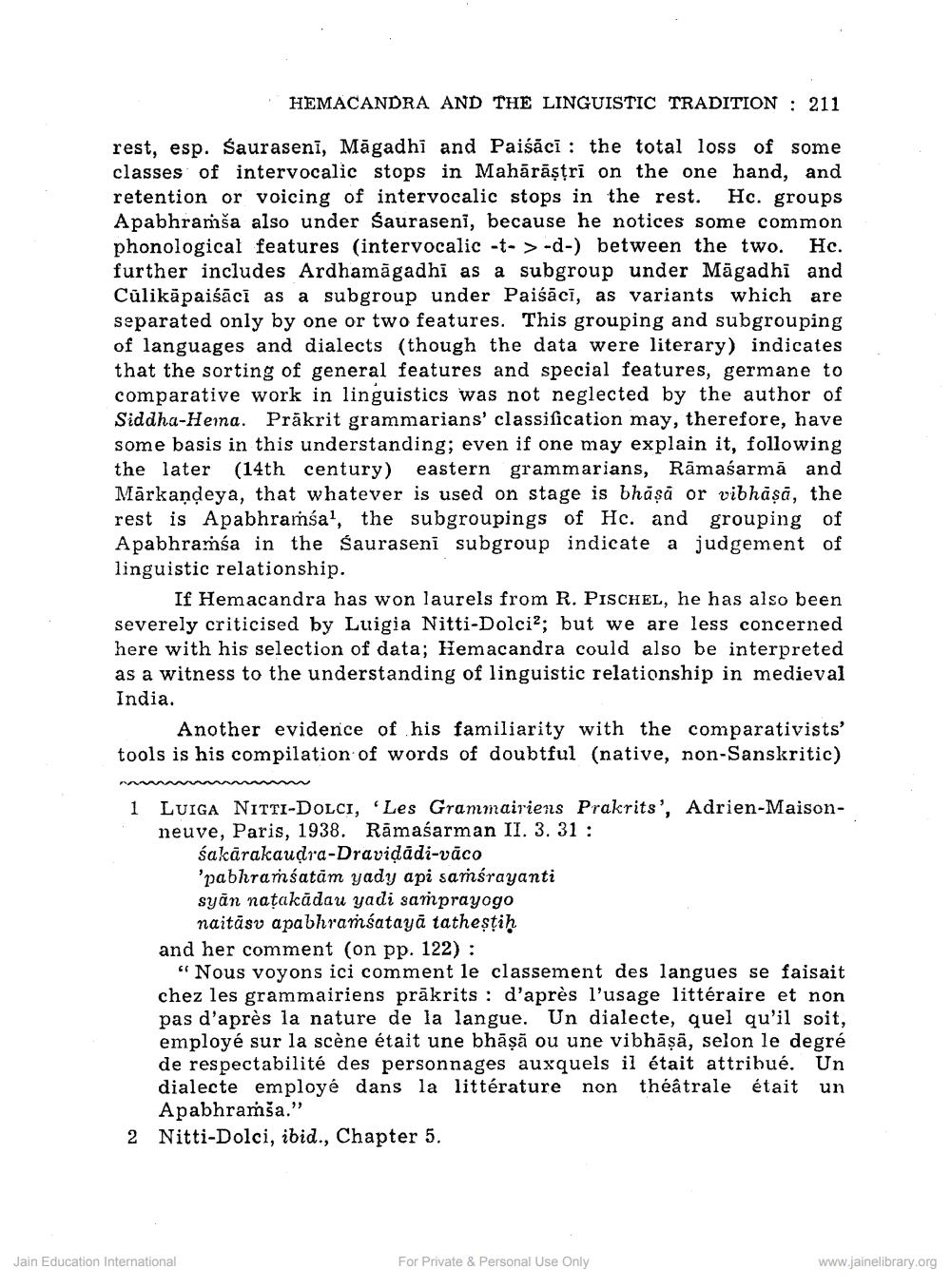Book Title: Hemacandra and the Linguistic Tradition Author(s): Prabodh Bechardas Pandit Publisher: Z_Mahavir_Jain_Vidyalay_Suvarna_Mahotsav_Granth_Part_1_012002.pdf and Mahavir_Jain_Vidyalay_Suvarna_ View full book textPage 2
________________ HEMACANDRA AND THE LINGUISTIC TRADITION : 211 rest, esp. Saurasenī, Māgadhi and Paiśăci : the total loss of some classes of intervocalic stops in Mahārāştri on the one hand, and retention or voicing of intervocalic stops in the rest. Hc. groups Apabhramša also under Sauraseni, because he notices some common phonological features (intervocalic -- > -d-) between the two. Hc. further includes Ardhamāgadhi as a subgroup under Māgadhi and Cülikäpaiśācī as a subgroup under Paiśācī, as variants which are separated only by one or two features. This grouping and subgrouping of languages and dialects (though the data were literary) indicates that the sorting of general features and special features, germane to comparative work in linguistics was not neglected by the author of Siddha-Heina. Prākrit grammarians' classification may, therefore, have some basis in this understanding; even if one may explain it, following the later (14th century) eastern grammarians, Rāmaśarmā and Mārkandeya, that whatever is used on stage is bhāṣā or vibhāṣā, the rest is Apabhramsal, the subgroupings of Hc. and grouping of Apabhraṁsa in the Sauraseni subgroup indicate a judgement of linguistic relationship. If Hemacandra has won laurels from R. PISCHEL, he has also been severely criticised by Luigia Nitti-Dolci?; but we are less concerned here with his selection of data; Hemacandra could also be interpreted as a witness to the understanding of linguistic relationship in medieval India. Another evidence of his familiarity with the comparativists' tools is his compilation of words of doubtful (native, non-Sanskritic) 1 LUIGA NITTI-DOLCI, 'Les Grammairiens Prakrits', Adrien-Maisonneuve, Paris, 1938. Rāmaśarman II. 3. 31 : śakārakaudra-Dravidādi-vāco 'pabhramśatām yady api sarśrayanti syān națakādau yadi samprayogo naitāsv apabhramsatayā tatheștiḥ and her comment (on pp. 122) : "Nous voyons ici comment le classement des langues se faisait chez les grammairiens prākrits : d'après l'usage littéraire et non pas d'après la nature de la langue. Un dialecte, quel qu'il soit, employé sur la scène était une bhāşã ou une vibhāṣā, selon le degré de respectabilité des personnages auxquels il était attribué. Un dialecte employé dans la littérature non théâtrale était un Apabhraíša." 2 Nitti-Dolci, ibid., Chapter 5. Jain Education International For Private & Personal Use Only www.jainelibrary.orgPage Navigation
1 2 3 4
